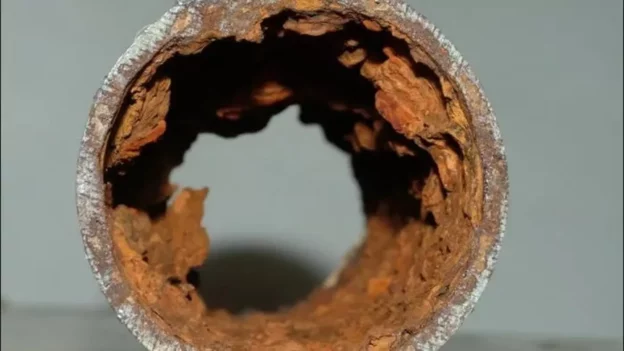Table of Contents
Author: Dr. Reza Javaherdashti. Eninco Engineering BV. The Netherlands
INSPENET’s collaboration and knowledge platform plays a key role in providing a space to share innovative ideas and perspectives with practitioners and academics from around the world. It also provides access to valuable information and new perspectives that contribute to the continuous advancement of corrosion management.
In this context, we are pleased to welcome such a prestigious guest Dr. Reza Javaherdashti, from Eninco Engineering BV in the Netherlands. Scientist recognized in UK, Netherlands and USA, as a leader in Microbiologically Influenced Corrosion (MIC) management, Dr. Reza offers insight into the challenges and opportunities in this constantly evolving field.
For Inspenet as a scientific and technological information network it is important to present his article entitled “Microbiologically Influenced Corrosion (MIC): Common Mistakes“. Below is a summary of his professional career in the area of corrosion.
Dr. Reza Javaherdashti is a leading expert in corrosion research, specializing in Microbiologically Influenced Corrosion (MIC). With more than 25 years of experience, he has been actively involved in more than 400 corrosion management projects worldwide, with a special focus on MIC since 1993. As a lecturer and scientist in MIC, he has given more than 5000 hours of training and has written numerous articles and books on the subject. As a consultant, he has collaborated with leading companies in several countries, contributing to the advancement of corrosion understanding and management.
We hope that this article, based on Dr. Reza Javaherdashti’s experience and expertise, will inspire new approaches and solutions for effective management of Microbiologically Influenced Corrosion in various industrial applications and also, that this collaboration can motivate many other people to share experiences, studies, and/or developed articles that can help many individuals within the professional community.
Inspenet is pleased to share this excellent article by Dr. Reza.
Introduction
All engineers are involved in making things, we corrosion experts, however, care about how to extend structure’s useful life and provide safety of production processes of any kind. These days almost everyone knows about corrosion costs thanks to many publications on the subject.
Corrosion is to address loss of mechanical strength of metals. It is not including non-metals. The reason is that for (electrochemical) corrosion to happen one needs three essential elements: an anode which is the site from which electrons are liberated and migrate towards the cathode. When the electrons that have been added to the metal during extractive metallurgy processes are absorbed by the cathode, an electrical current is created. For metals and according to Faraday’s law, the numerical value of the current density, measured in A/m2, is equal to the rate at which the thickness of the metal in question is being lost.
This rate is expressed as mm/ year. The resulting ions will travel through the electrolyte and thus when anode-cathode-electrolyte are available, electrochemical corrosion is unavoidable. Non-metals cannot have anode and cathode though.
Any factor that can facilitate electrochemical corrosion will be leading into its enhancement. If among many factors, living organisms such as bacteria (and their cousins, archaea), algae, fungi and lichen exist to facilitate corrosion, then corrosion will be referred to as “Microbiologically Influenced Corrosion (MIC)“, as approved by NACE (ex-AMPP) in early 1990s and abbreviated as MIC or alternatively stated as microbial corrosion.
Differences and errors between MID and MIC
MIC (in metals) and MID (microbiologically influenced deterioration, in non-metals) are both known and unknown topics. Also, due to the very multidisciplinary nature of MIC, many expertise are involved in it and its is as if each pf these expertise and specialities count MIC as their own playground> microbiologists are mainly involved in finding out what micro-/macro-organisms are involved in MIC/MID and that how they can be revealed in corrosion products and via what methods and what is the reliability of these methods. Materials experts care about how different materials can perform more effectively against MIC/MID and electrochemists are after finding how by using customary electrochemical techniques, MIC can be characterised and so on.
Below we will very briefly embark on just a few pitfalls about MIC/MID, hoping that in the future we will be given better opportunities to write/talk more about amazing aspects of MIC/MID.
Are just living micro-/macro-organisms involved in MIC/MID?
No! When bacteria, for instance, die and their bodies do not leave the system, various electrochemical cells (e.g. differential aeration cells) can be established and thus overall corrosion can be enhanced via processes similar to corrosion under deposits,
Can the bacteria involved in MIC/MID be transferred via water?
While water in necessary for both electrochemical corrosion as well as bacterial life and thus where water in liquid form with desirable temperature and chemical conditions exists, likelihood of MIC/MID will be higher. However, as bacteria are very light, they can be transferred by air streams and thus enhance the corrosive impact of atmospheric corrosion.
Can it be assumed that each bacteria species known for a certain corrosive function do not vary and always remains that way?
Not necessarily! Prokaryotes (bacteria & archaea) can evolve by “horizontal” gene transfer. This means that a group of bacteria known for inducing a certain corrosive action can-under certain circumstances- can do corrosive actions specific to another group of bacteria. For instance, anaerobic some Clostridia (that normally contribute to corrosion by producing ample amount of hydrogen and production of organic acids) have been reported of having the ability of generating hydrogen sulphide gas (like Sulphate reducing bacteria, a.k.a. SRB) or some of their species like those secreting butyric acid are even capable of iron reducing similar to iron reducing bacteria.
There are still a lot to be said such as inaccuracy of the popular term “biofilm”, lack of any relationship between not finding sulphate and assuming that there are no SRB and a lot more that may be in the future we will explain should we receive enough number of interested audiences!

